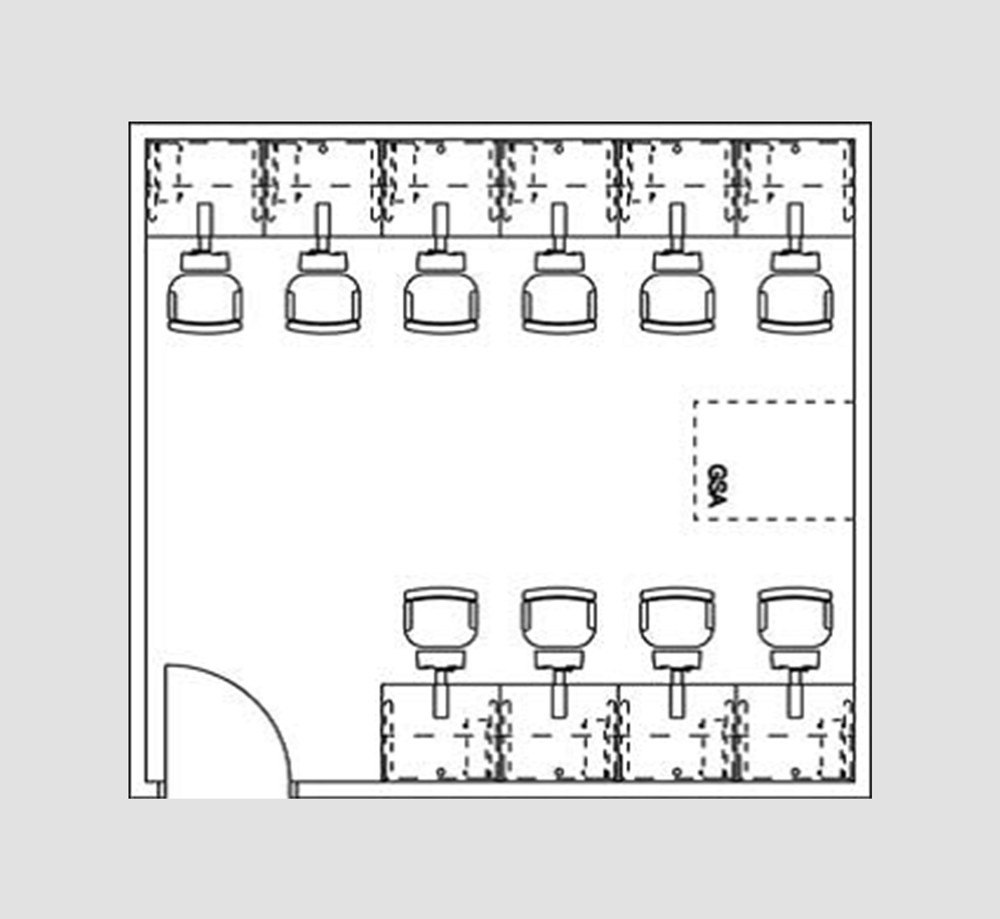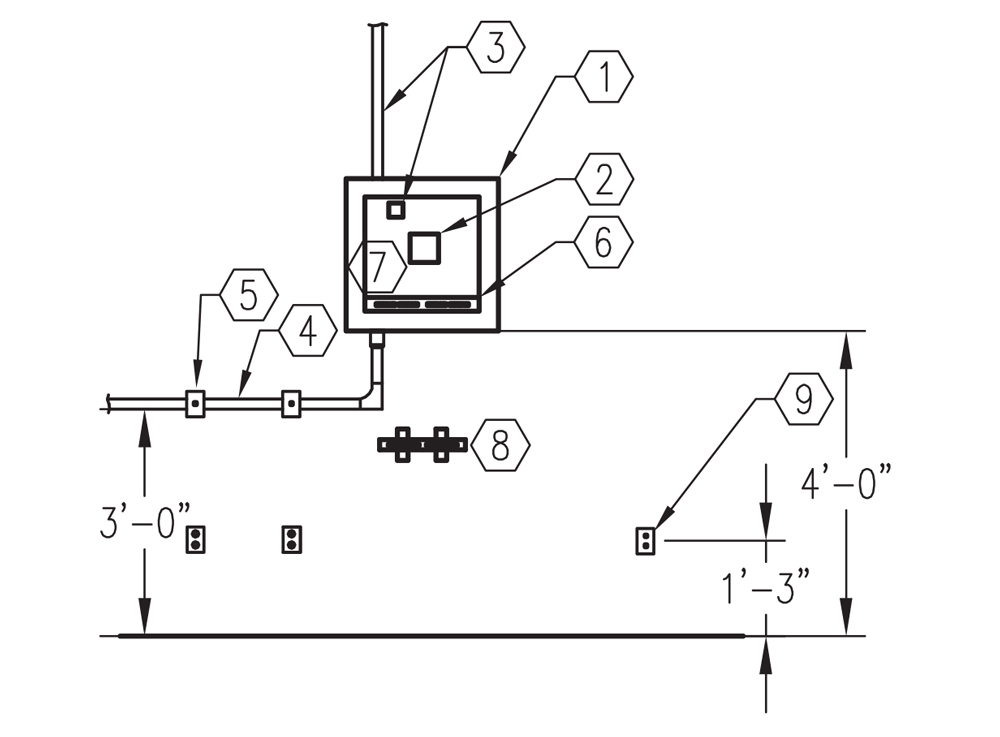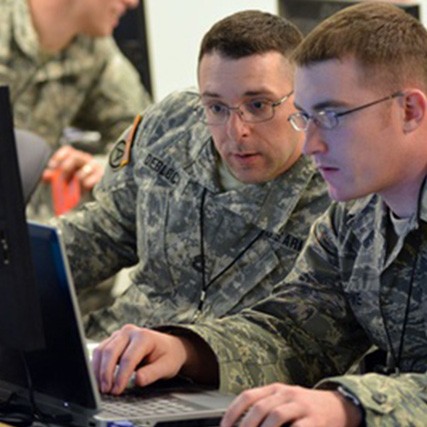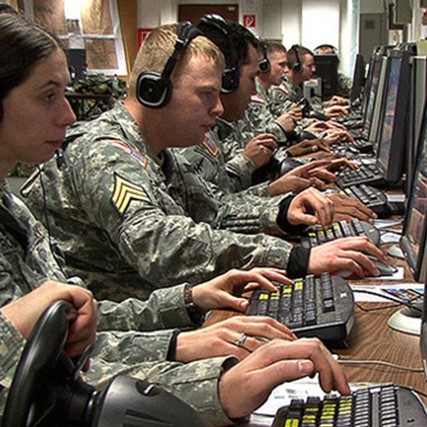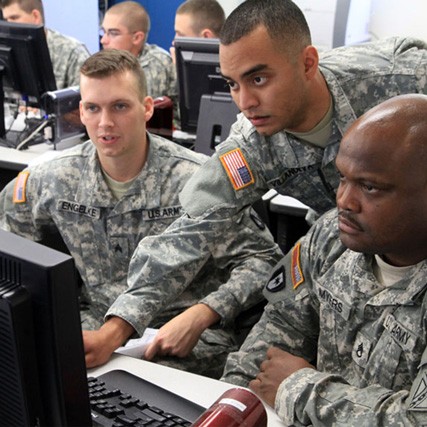This is a diagram of a standard SIPRNet café layout, taken from the Army Reserve IT Manual, showing workstations and general service administration (dashed box labeled GSA). Network equipment cabinet where sensitive data is encrypted. The contractor is responsible for providing infrastructure to connect to the Government-provided equipment.
Designing to Military Standards
SMMA has designed a number of highly secured spaces for Army Reserve and National Guard training facilities, including arms vaults, communications security (COMSEC) areas, and secret internet protocol router network (SIPRNet) cafés, the latter being among the most challenging and interesting, in terms of design.
What follows is an overview of the criteria used to design a SIPRNet café. This article is acronym heavy, and every effort has been made to spell out terms used by the Army Reserve.
Per the Army Reserve IT Manual, the implementation of SIPRNet in an Army Reserve facility is based on encryption within SIPRNet cafés—these spaces are dedicated to the transmission and reception of secure information. Strict adherence to United States Army Reserve Command (USARC) requirements must be maintained during the design and construction of such spaces.
Throughout the design process, the entire SIPRNet system is reviewed with, and approved by, a civilian division, known as the G6, contracted by the USARC. The G6 manages the USARC Enterprise Architecture Program, directs a staff of Army civilians and contractors, and ensures that the activities of the USARC Enterprise Services Activity (ESA) Divisions (Network Services, Network Applications, and Information Management Services) comply with USARC Enterprise Architecture.
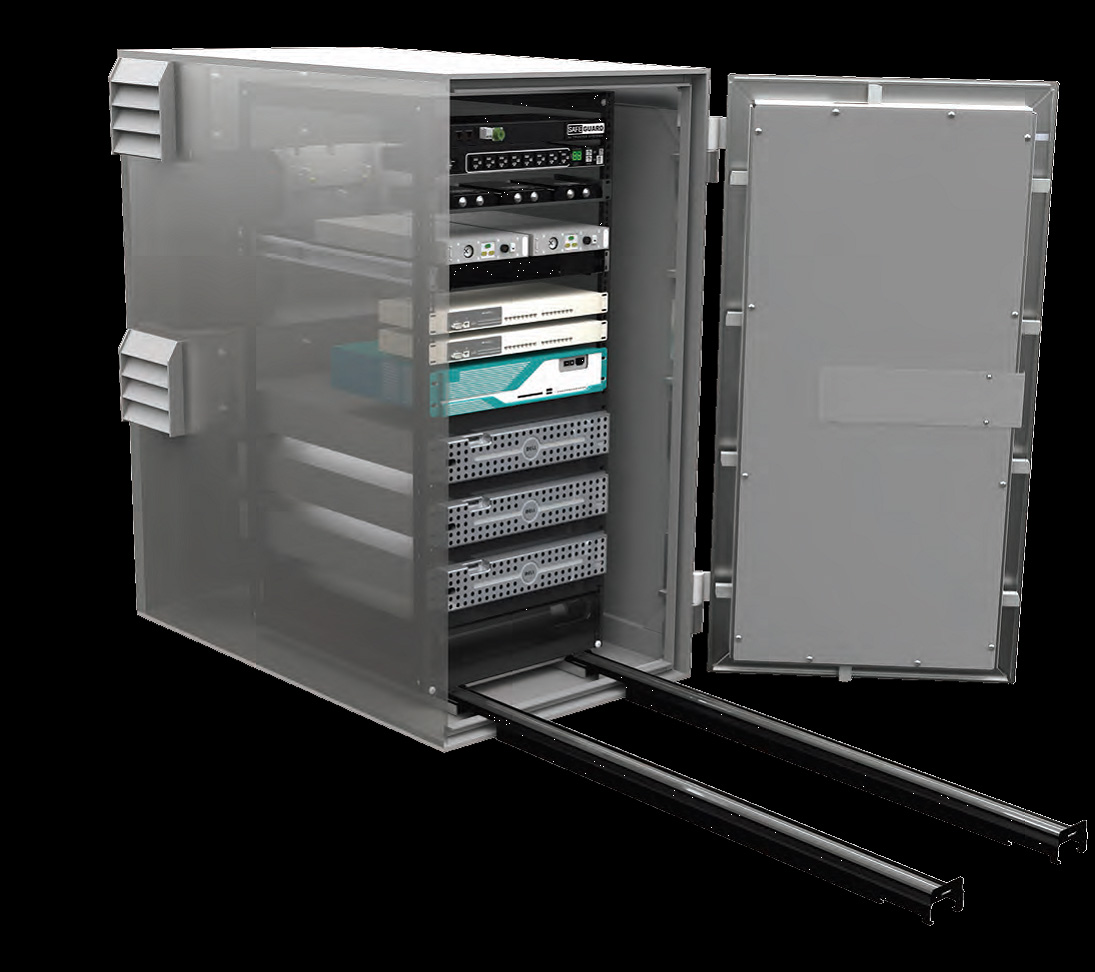
Image of SCIF-in-a-Box by Trusted Systems

